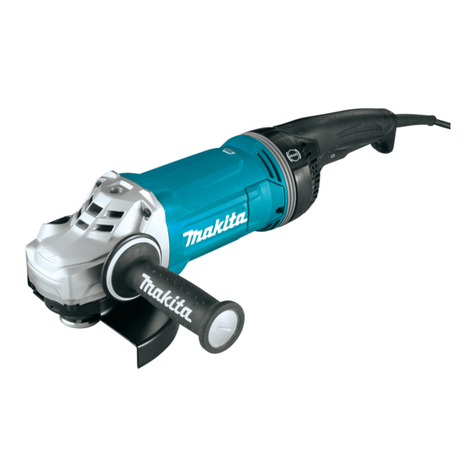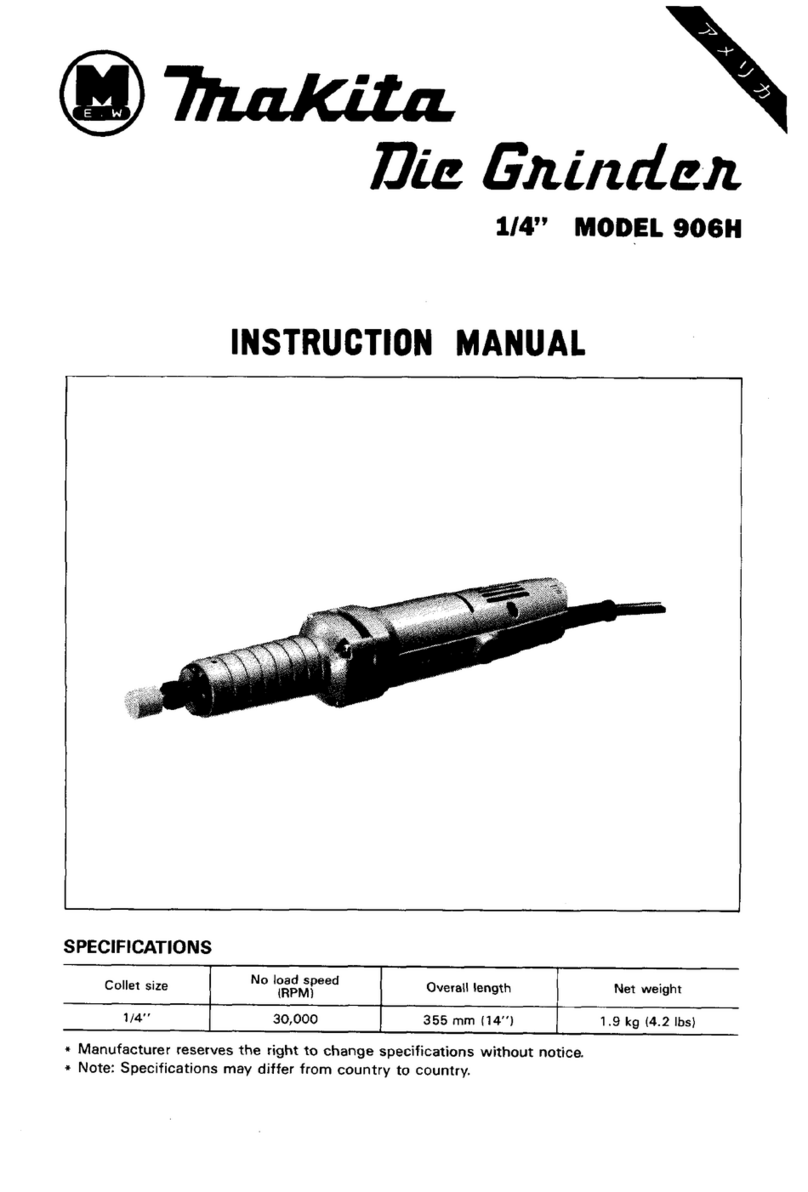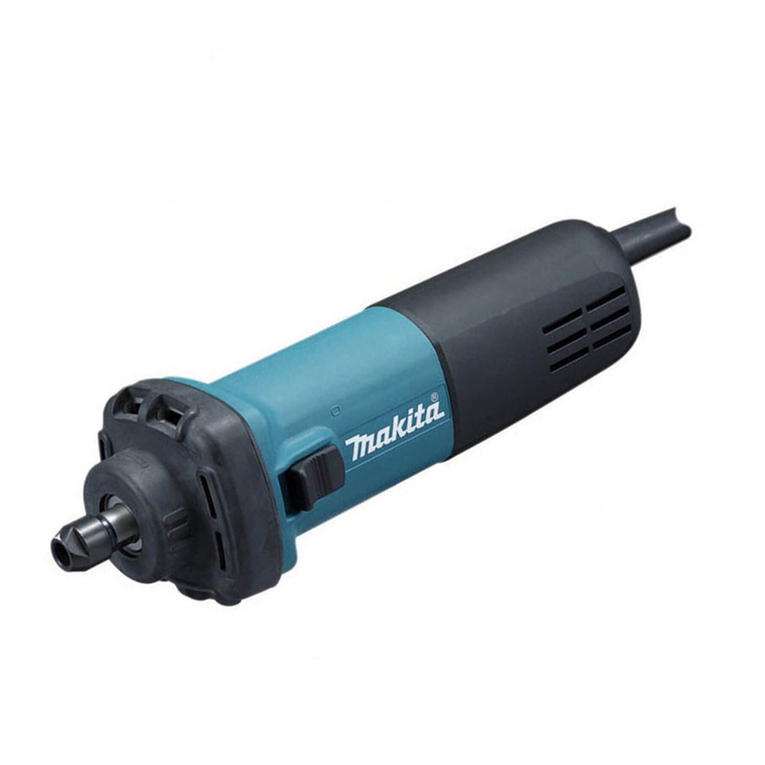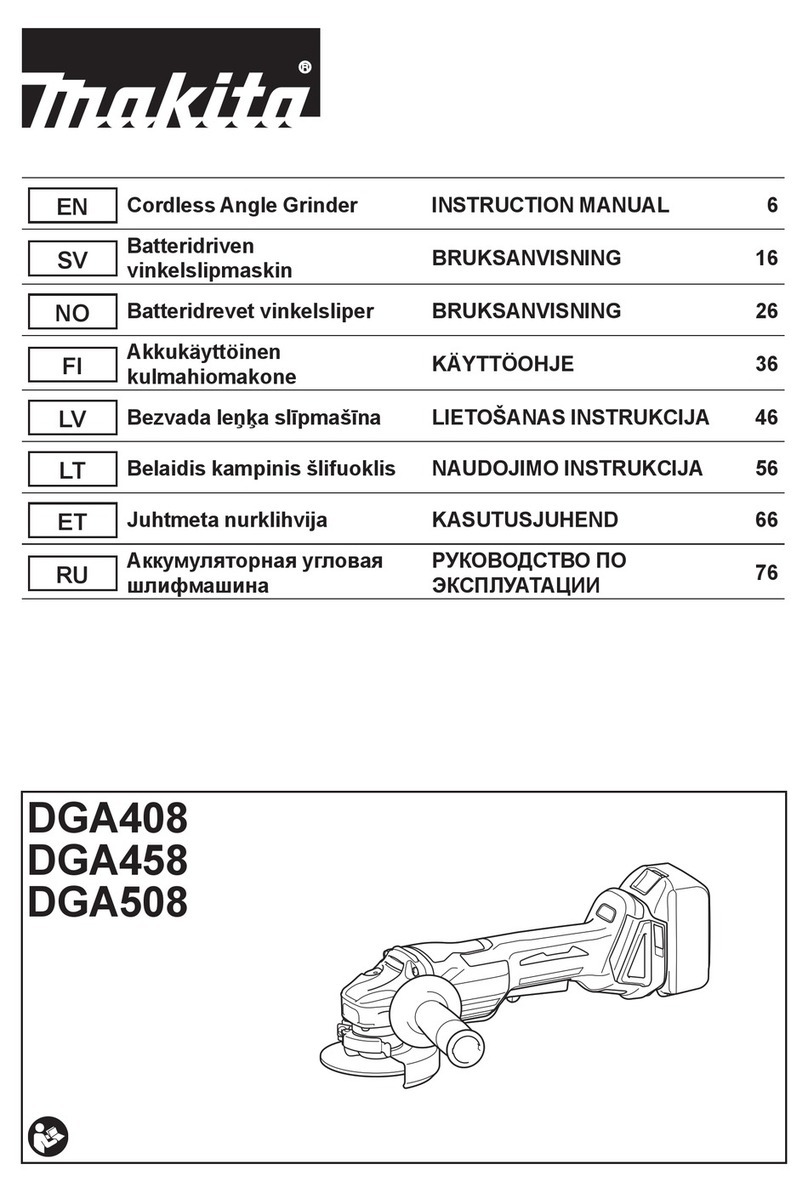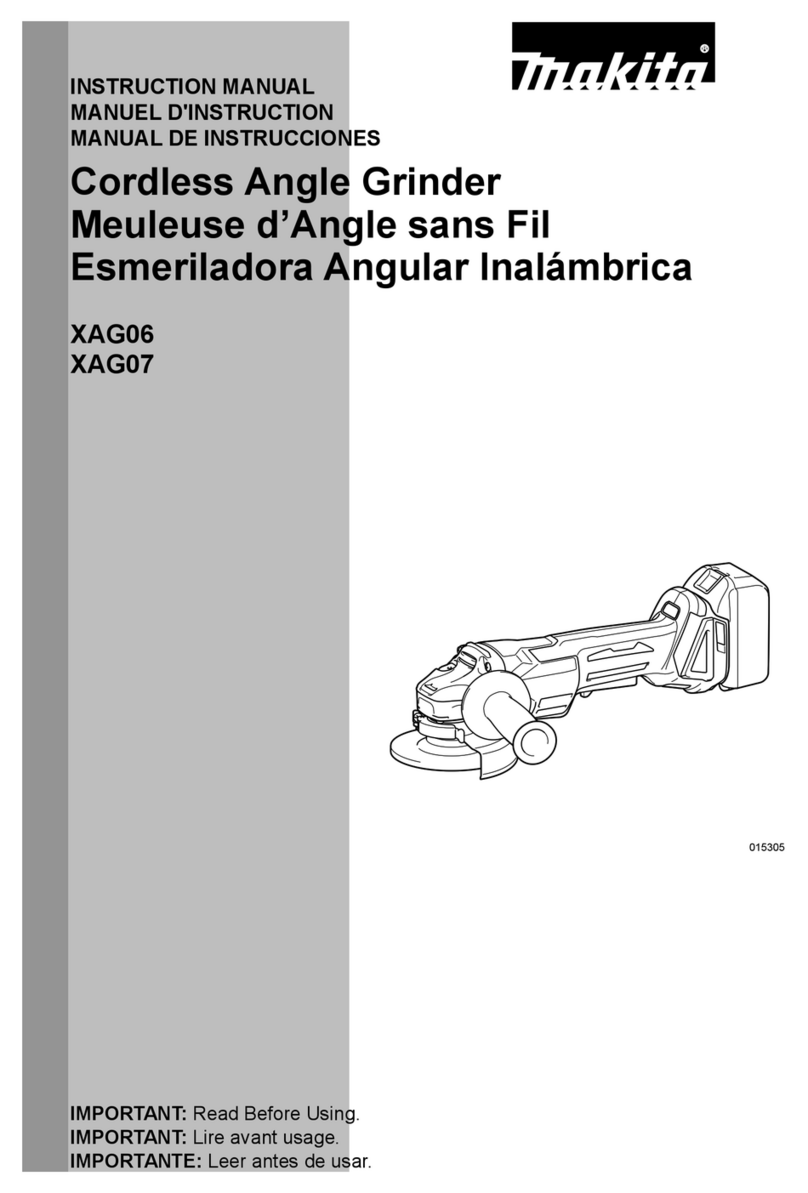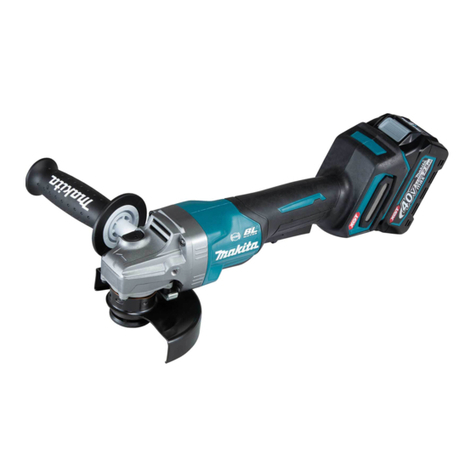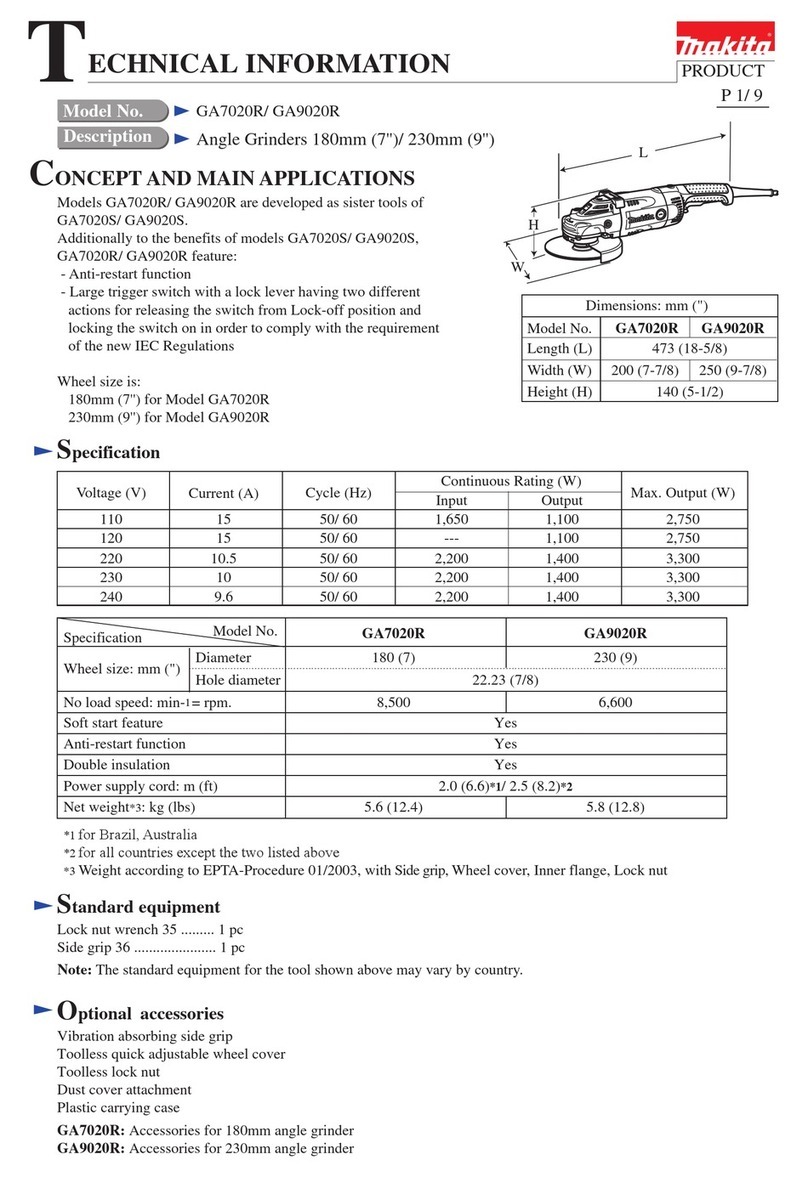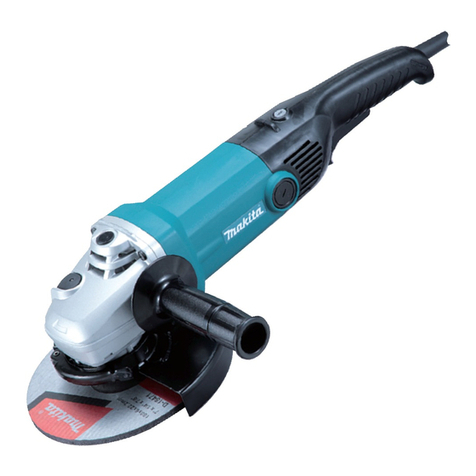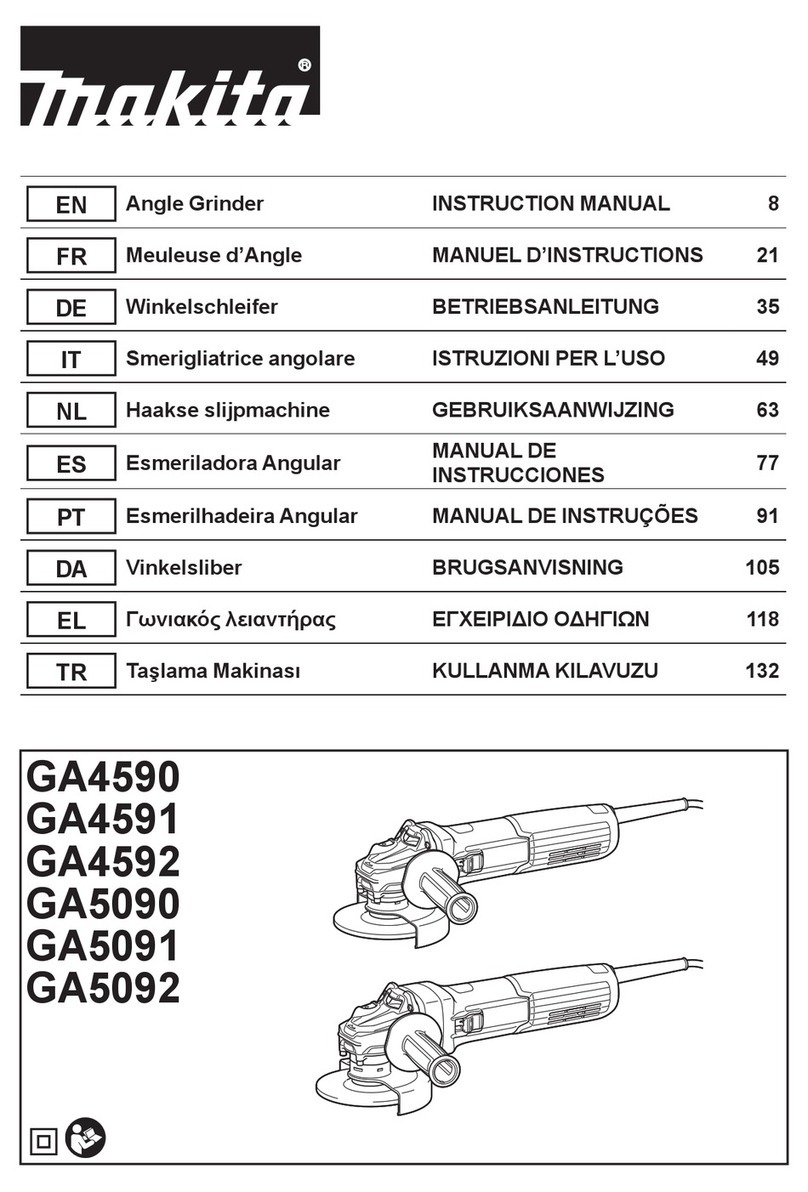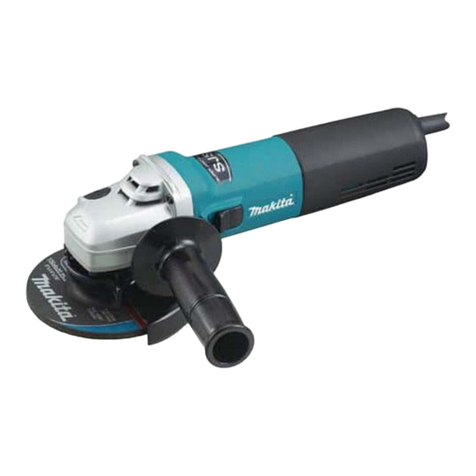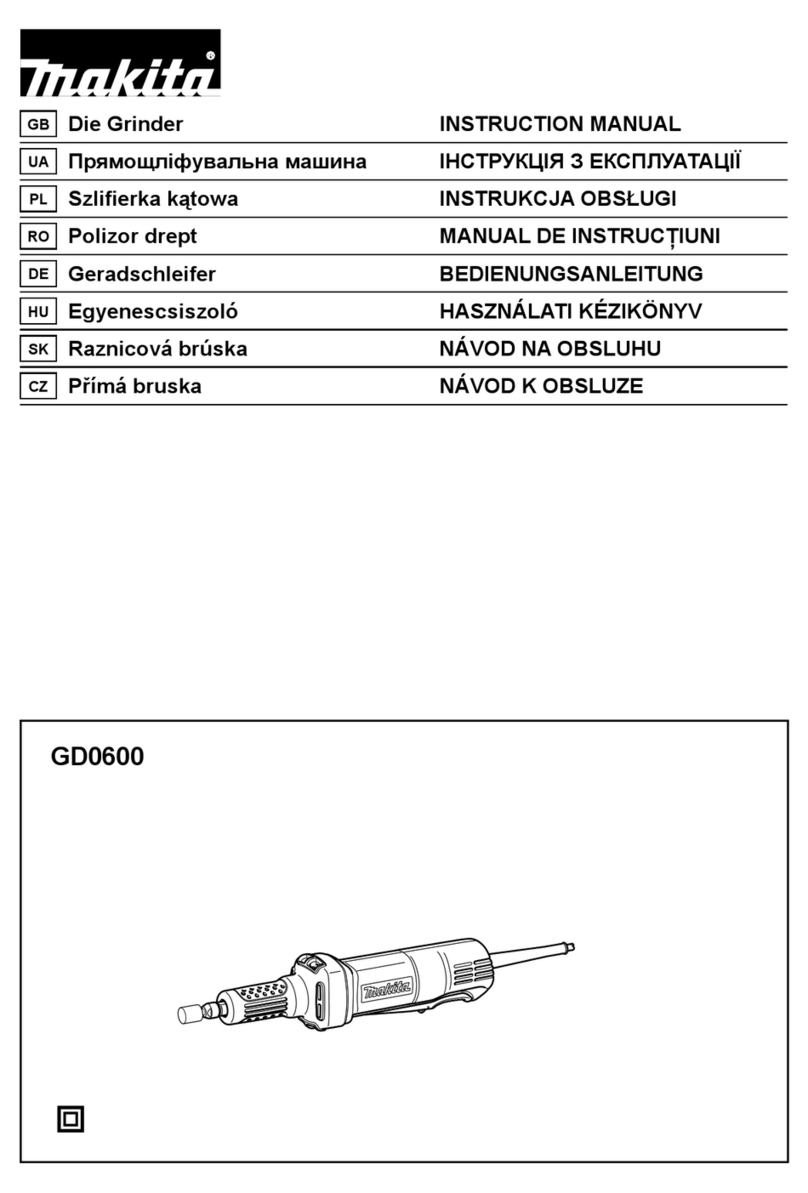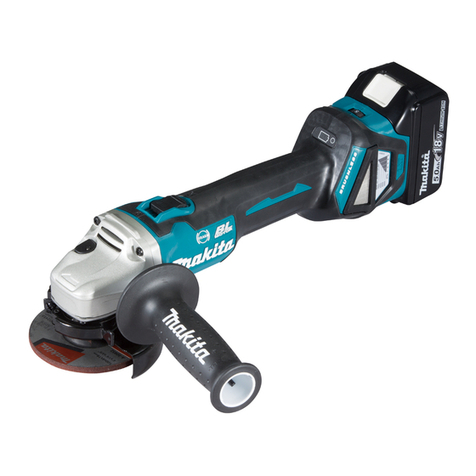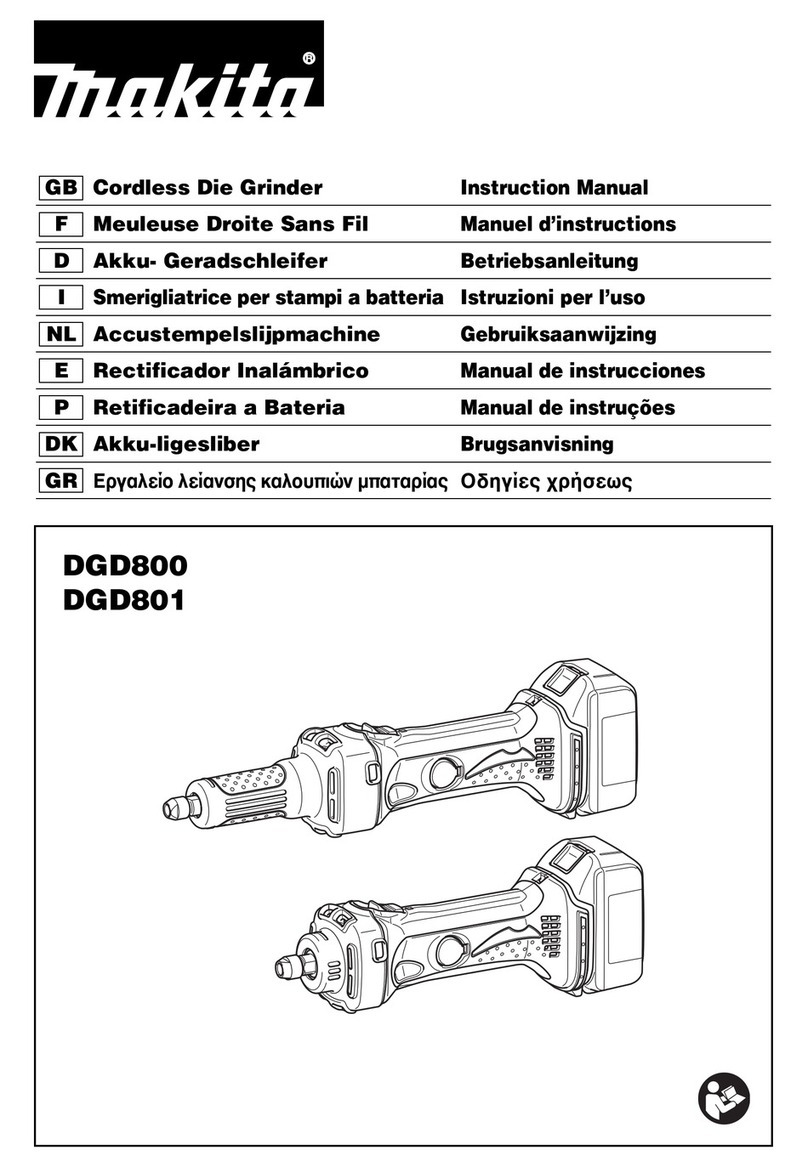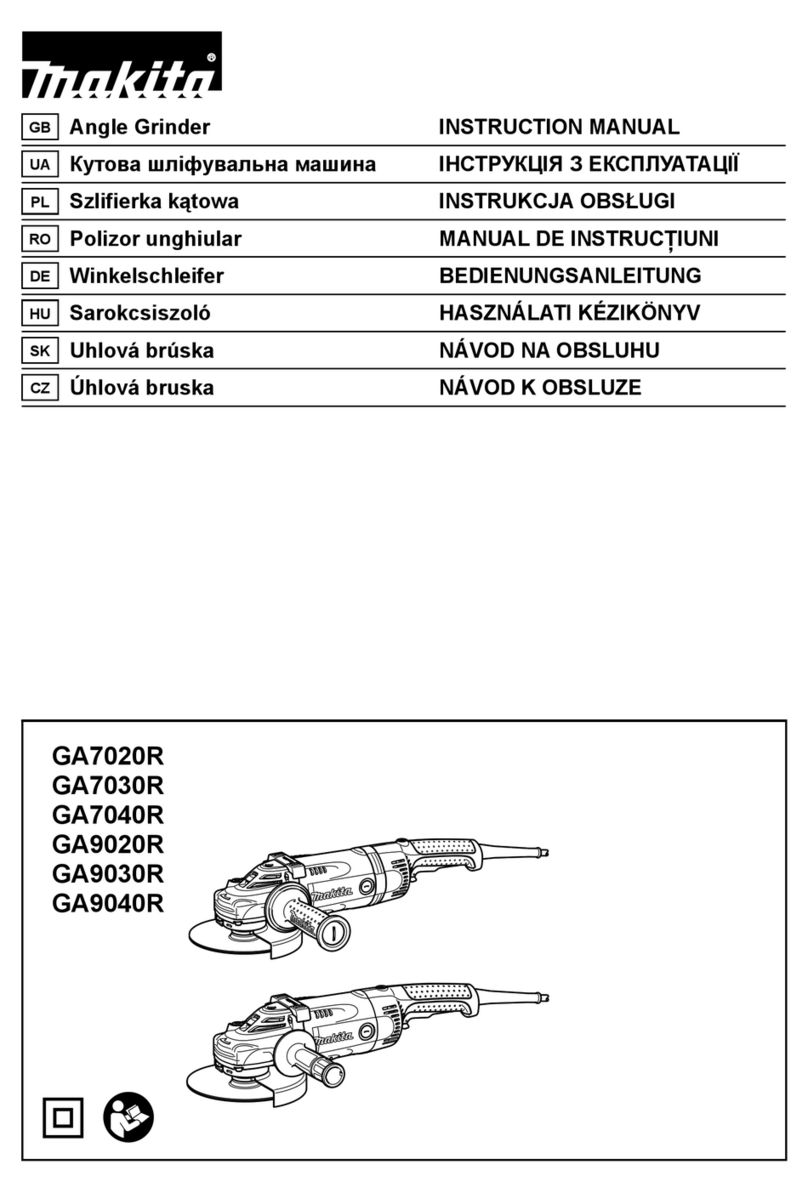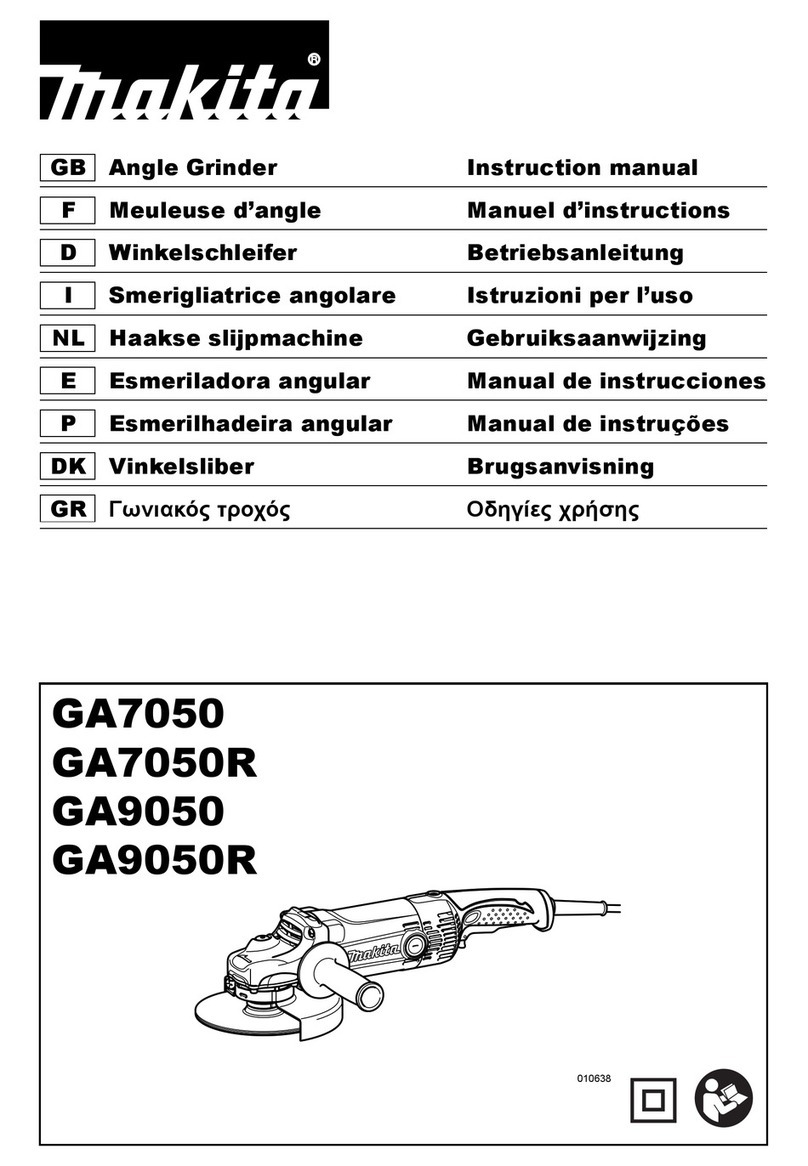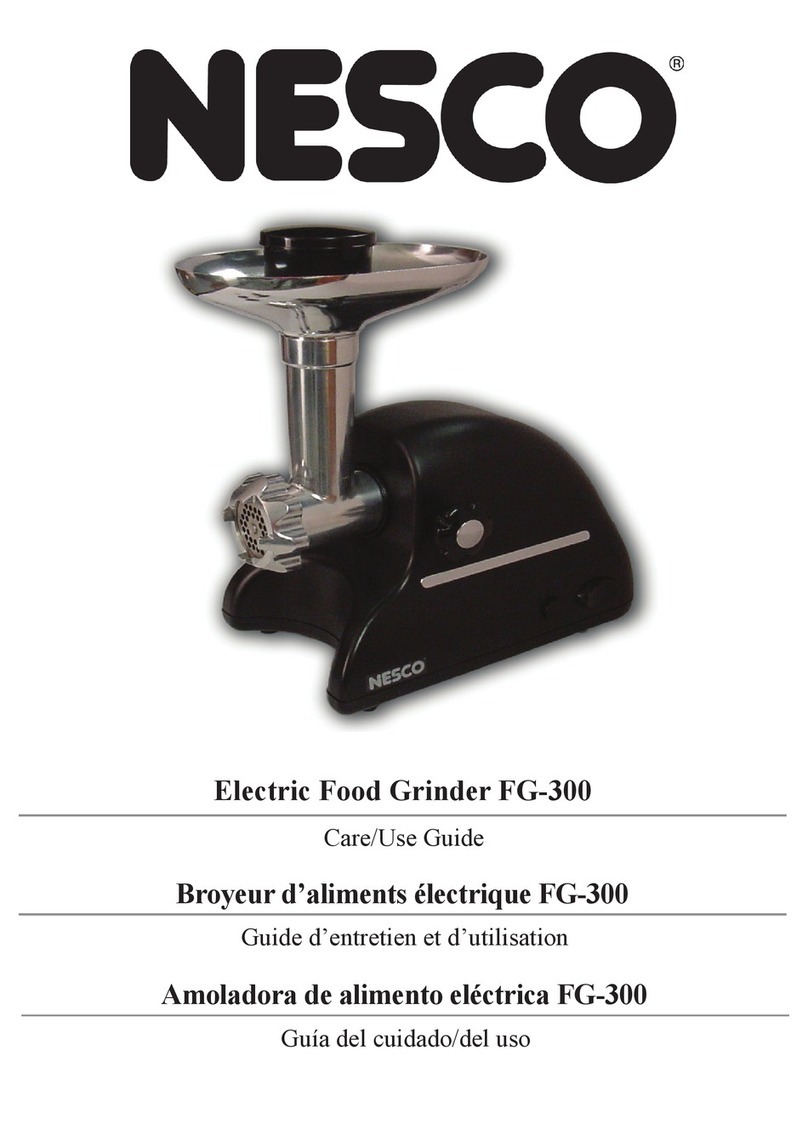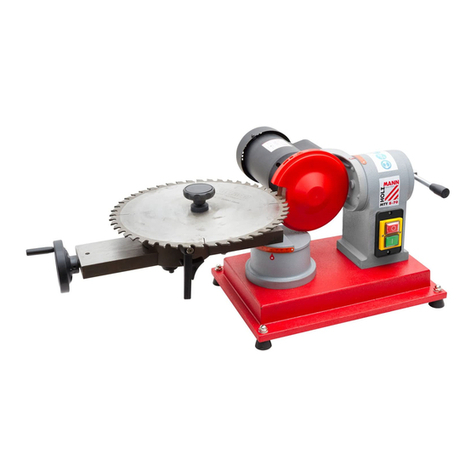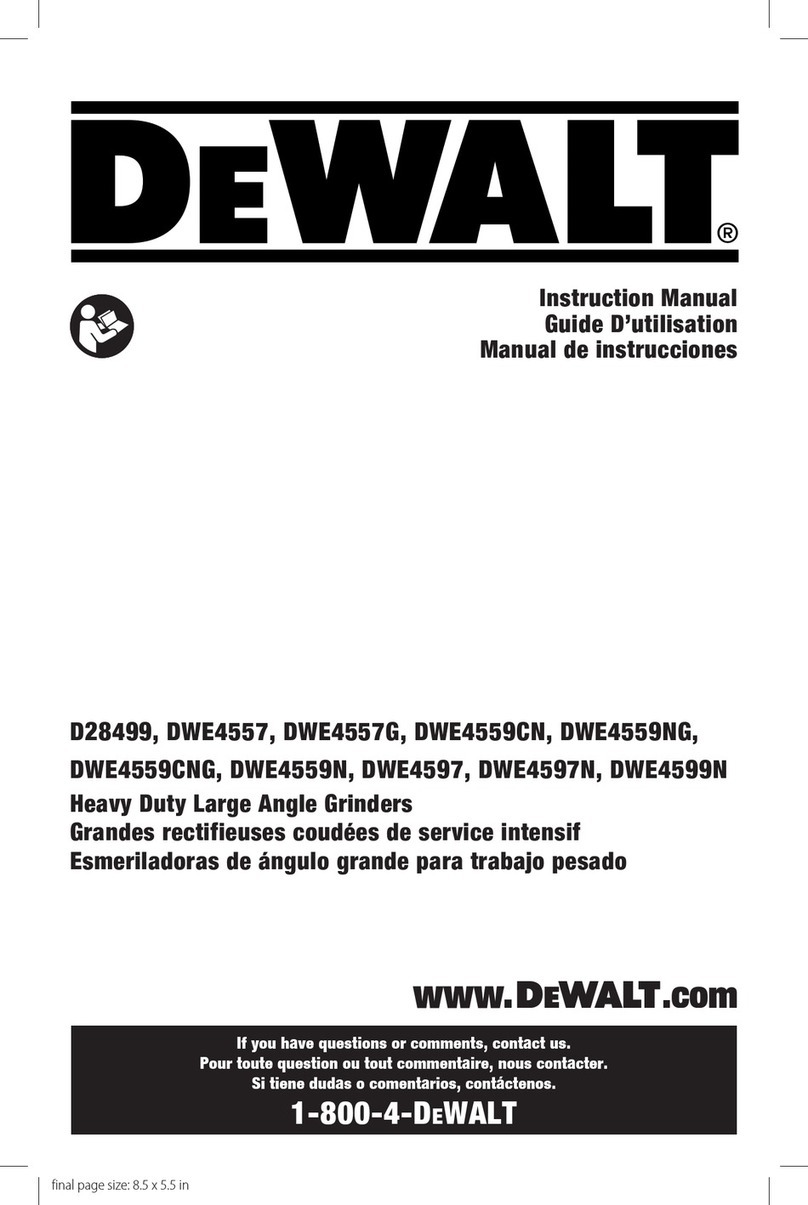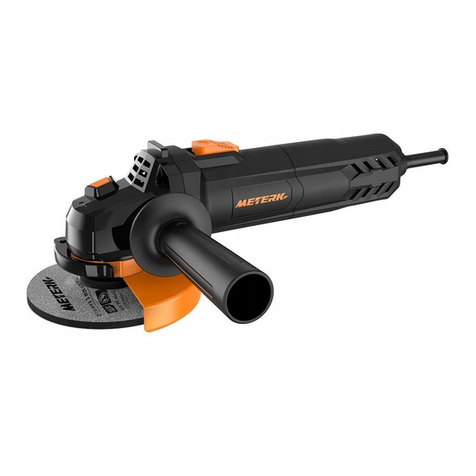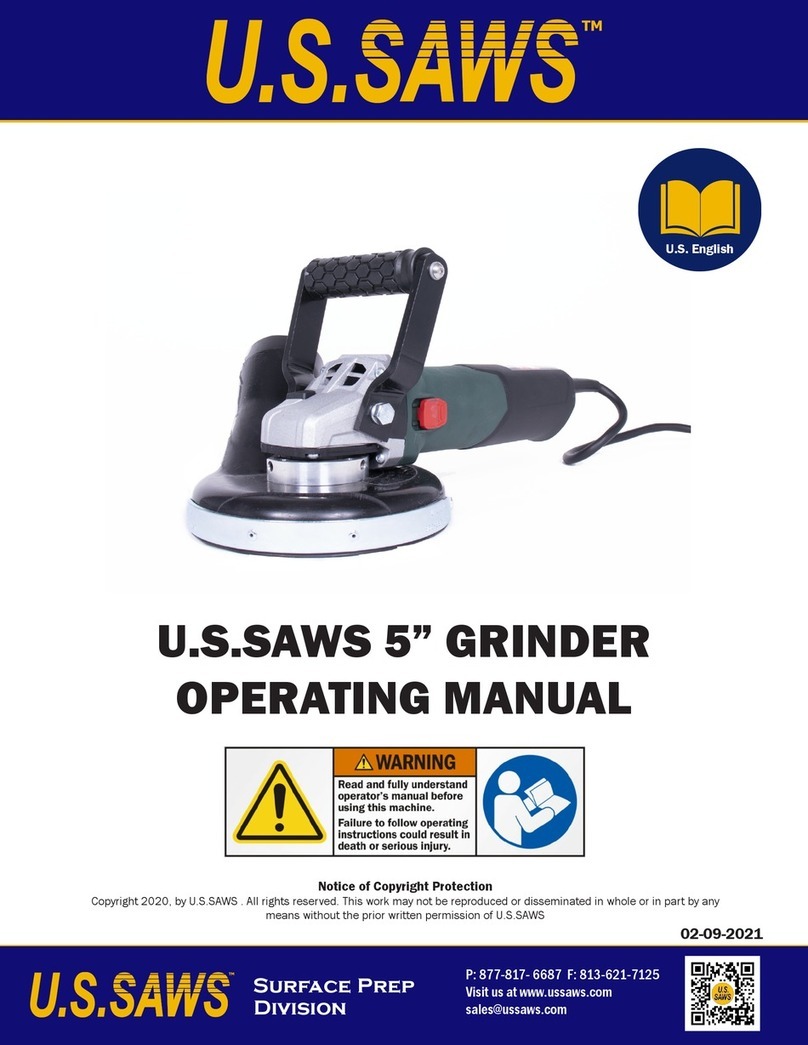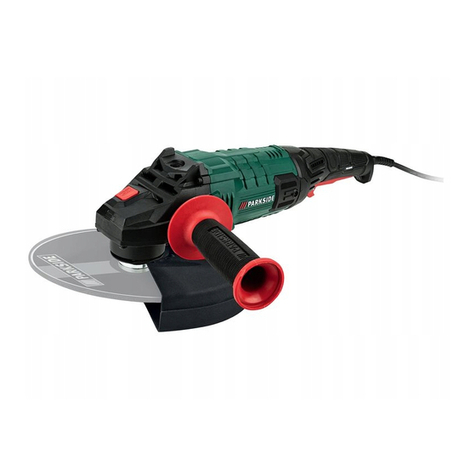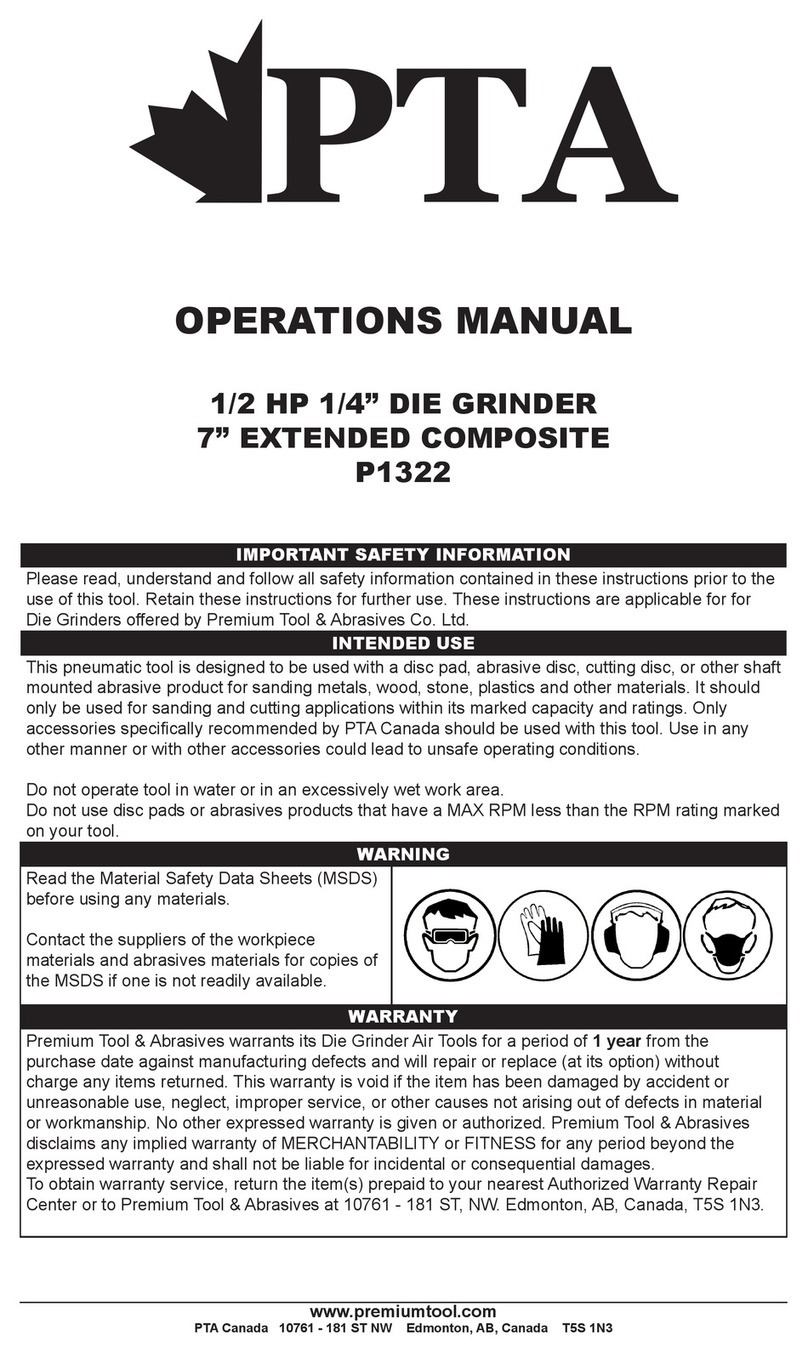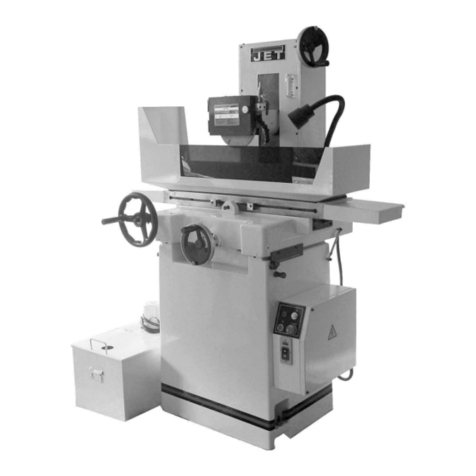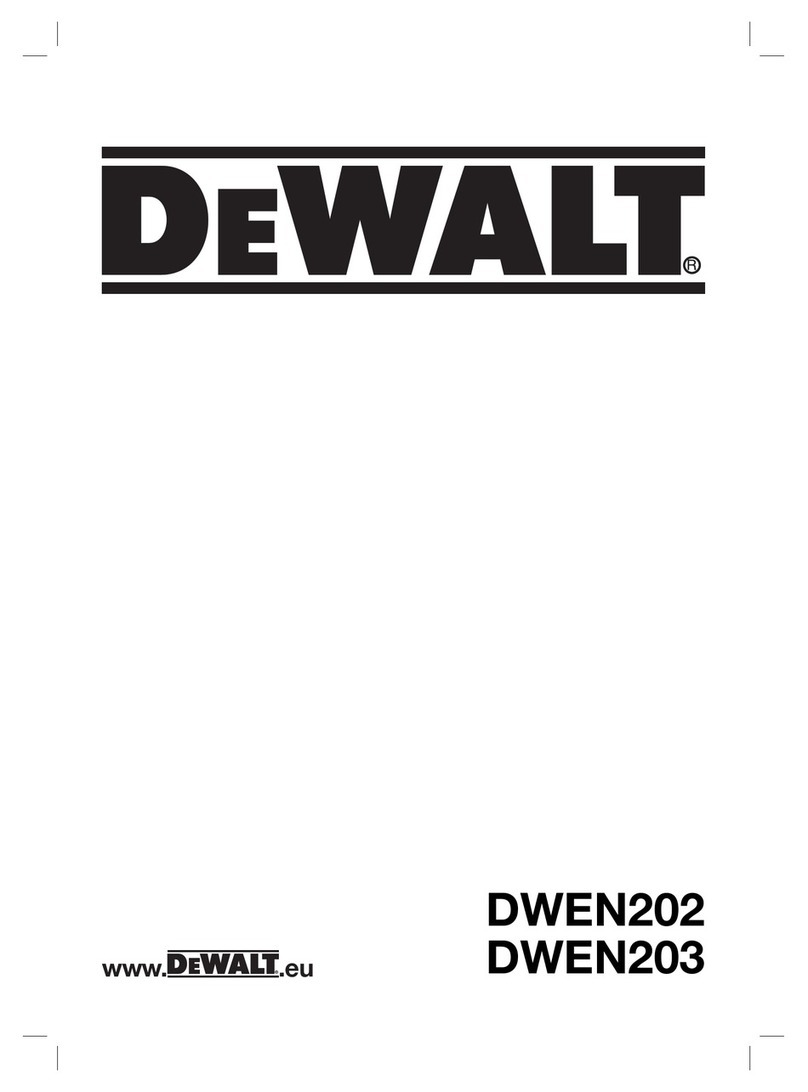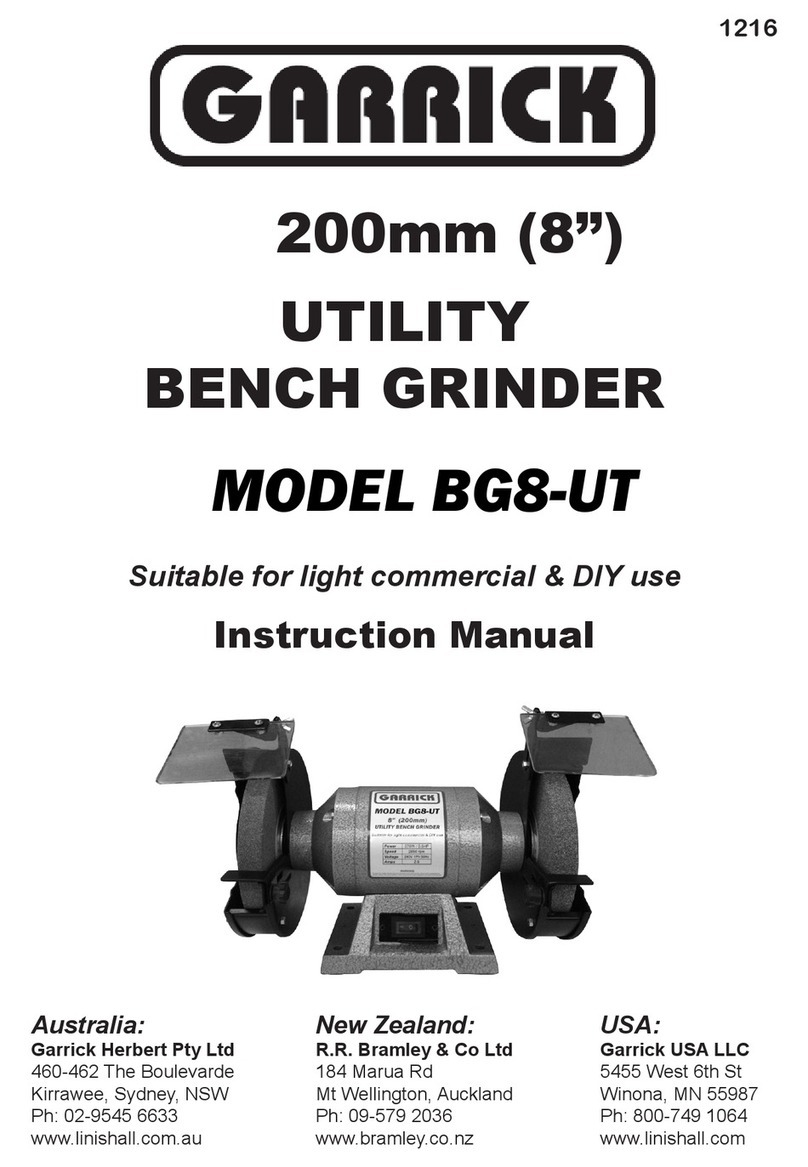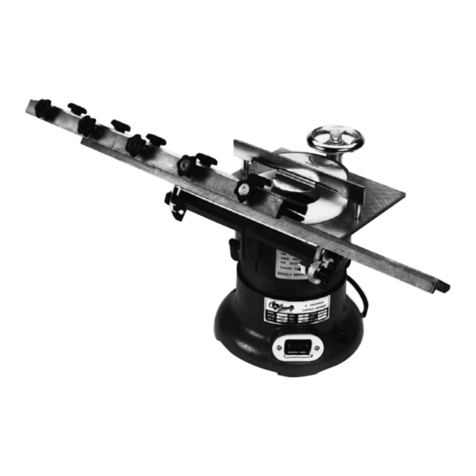
10 ENGLISH
ENGLISH (Original instructions)
SPECIFICATIONS
Model: DGA417 DGA418 DGA467 DGA468 DGA517 DGA518
Applicable grinding wheel Max. wheel diameter 100 mm 115 mm 125 mm
Max. wheel thickness 6.4 mm 7.2 mm
Max. wheel diameter 105 mm 115 mm 125 mm
Max. wheel thickness 3.2 mm
Applicable wire wheel brush Max. wheel diameter 100 mm 115 mm 125 mm
Max. wheel thickness 20 mm
Spindle thread M10
Max. spindle length 18 mm 23 mm
0 8,500 min-1
Overall length with BL1840B 382 mm
Net weight 2.2 - 3.7 kg 2.4 - 3.9 kg
D.C. 18 V
without notice.
-
est combinations, according to EPTA-Procedure 01/2014, are shown in the table.
Applicable battery cartridge and charger
BL1815N / BL1820B / BL1830B / BL1840B / BL1850B / BL1860B
Charger
DC18SH / DC18WC
•
WARNING: Only use the battery cartridges and chargers listed above.
Recommended cord connected power source
Portable power pack PDC01
Symbols
meaning before use.
operations.
Li-ion
Due to the presence of hazardous com-
ponents in the equipment, waste electrical
and electronic equipment, accumulators
on the environment and human health.
Do not dispose of electrical and electronic
appliances or batteries with household waste!
In accordance with the European Directive
on waste electrical and electronic equip-
ment and on accumulators and batteries
and waste accumulators and batteries,
as well as their adaptation to national law,
waste electrical equipment, batteries and
and delivered to a separate collection point
for municipal waste, operating in accor-
dance with the regulations on environmen-
tal protection.
crossed-out wheeled bin placed on the
equipment.


